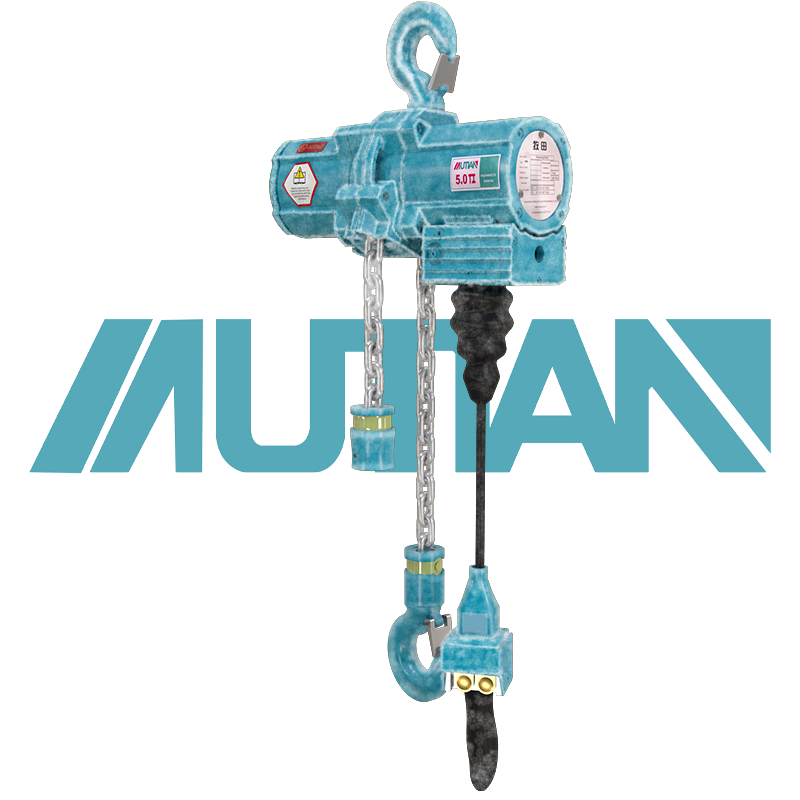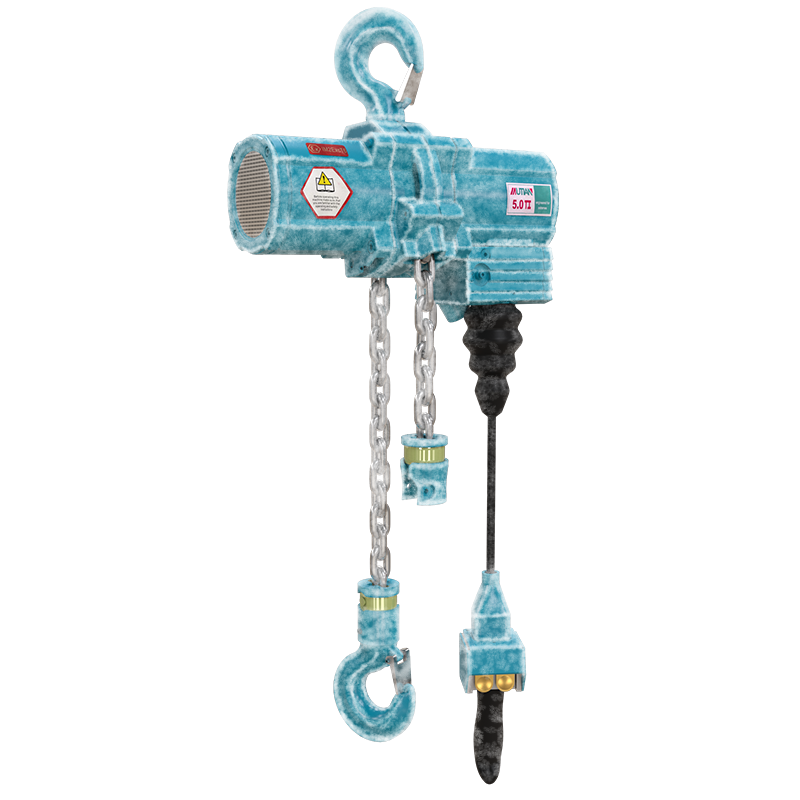 中文版
中文版



Welcome to contact us by phone:0086-0312-7969888
The use of cold-resistant pneumatic hoists requires adherence to certain requirements to ensure their safe and efficient operation in low-temperature environments. Here are some key requirements and considerations for the use of cold-resistant pneumatic hoists:
Temperature Range: Cold-resistant pneumatic hoists are designed to operate in specific temperature ranges. It is crucial to check and adhere to the manufacturer's specifications regarding the minimum and maximum operating temperatures. Exceeding these limits can affect the performance and safety of the hoist.
Material Selection: The hoist should be constructed with materials that can withstand cold temperatures without becoming brittle or losing mechanical properties. This includes the housing, internal components, and load-bearing elements.
Lubrication Systems: The hoist should be equipped with a lubrication system that is suitable for cold temperatures. Lubricants used in the hoist should be designed to remain effective in low temperatures to ensure smooth operation of moving parts.
Sealing and Insulation: Cold-resistant hoists should have effective seals and insulation to prevent moisture ingress and the formation of ice on critical components. Seals should maintain flexibility in cold conditions to ensure a tight seal.
Pneumatic System Design: The pneumatic system, including the air compressor, valves, and air reservoir, should be designed to handle the challenges posed by cold temperatures. This may involve incorporating features to prevent freezing of moisture in the compressed air.
Motor Design: The motor used in the pneumatic hoist should be specifically designed for cold environments. It should be able to operate efficiently in low temperatures without compromising performance.
Control Systems: The control systems, including buttons, levers, and remote controls, should be designed to be operable in cold conditions. Insulation and protection against ice formation are essential to ensure the reliable control of the hoist.
Braking Systems: Cold-resistant hoists should be equipped with braking systems that can function effectively in low temperatures. Proper braking is crucial for maintaining control and safety during lifting and lowering operations.
Load Chain or Wire Rope: The lifting medium (load chain or wire rope) should be selected based on its ability to withstand cold temperatures without compromising strength or flexibility.
Testing and Certification: Before use in cold environments, pneumatic hoists should undergo testing to ensure they meet specified performance criteria in low temperatures. Certification from relevant authorities may be required to verify compliance with safety standards.
Training and Operator Awareness: Operators should be trained on the specific features and requirements of cold-resistant pneumatic hoists. Awareness of the limitations and proper operating procedures in cold conditions is crucial for safe use.
It's important to note that these requirements may vary depending on the manufacturer and the specific model of the cold-resistant pneumatic hoist. Users should carefully review the product documentation and follow the guidelines provided by the manufacturer to ensure safe and effective operation in cold environments.

X